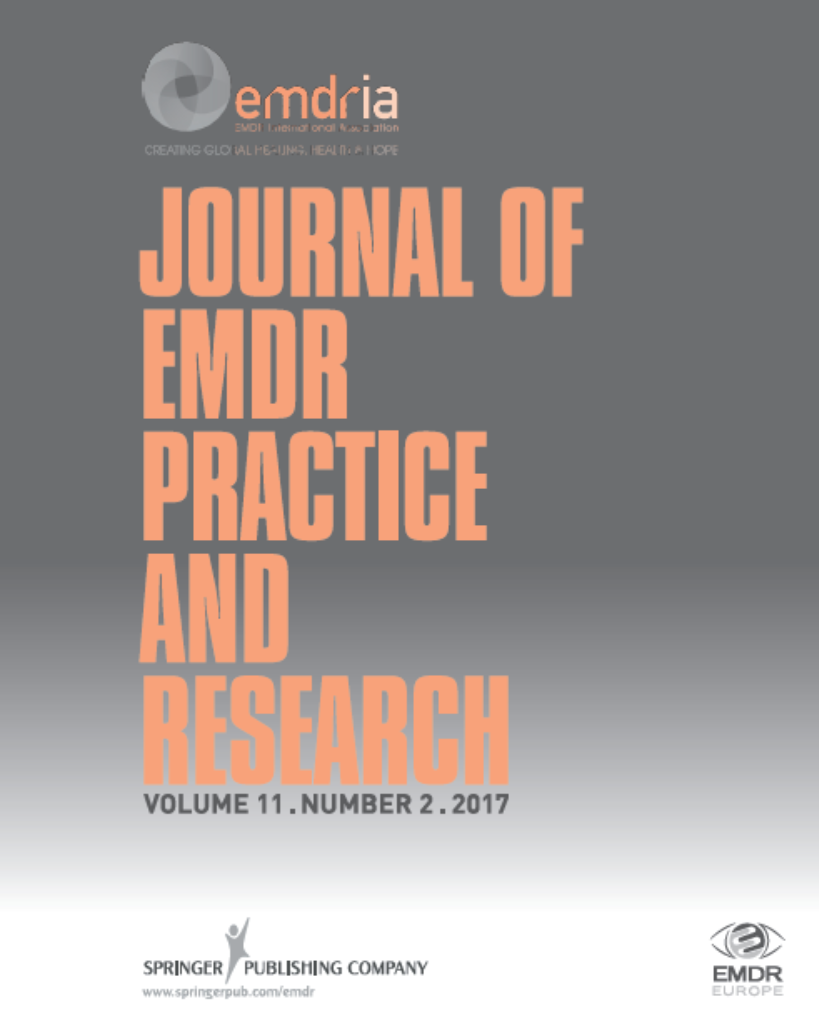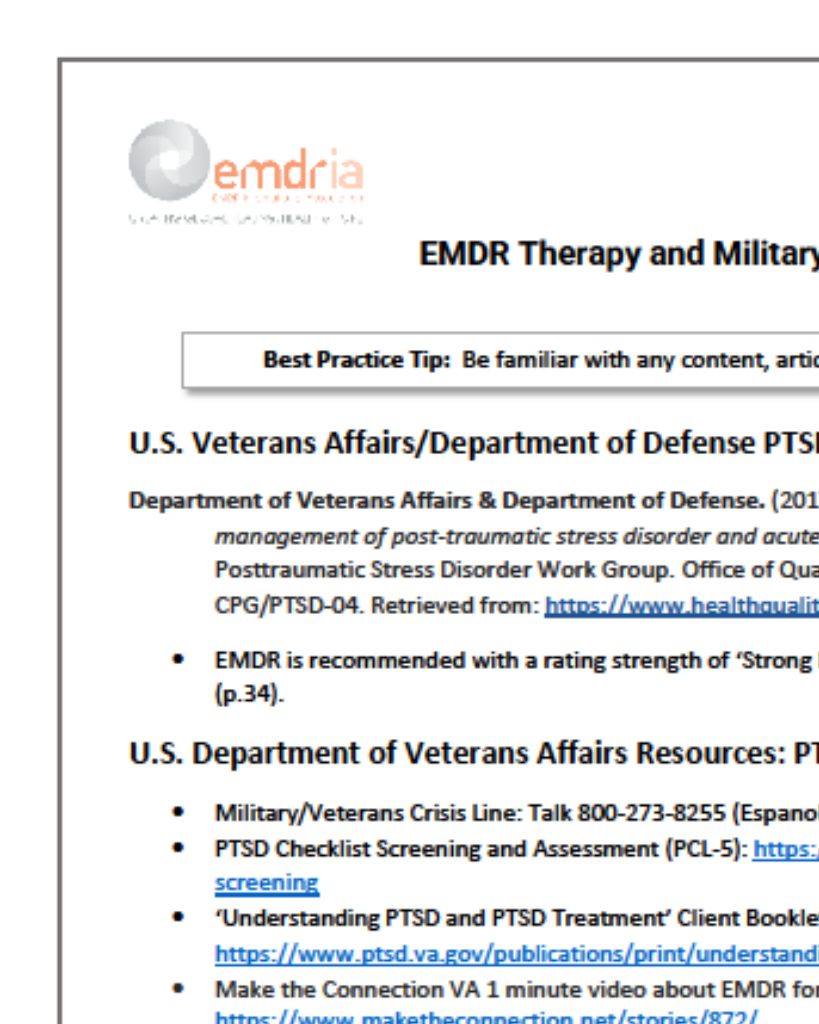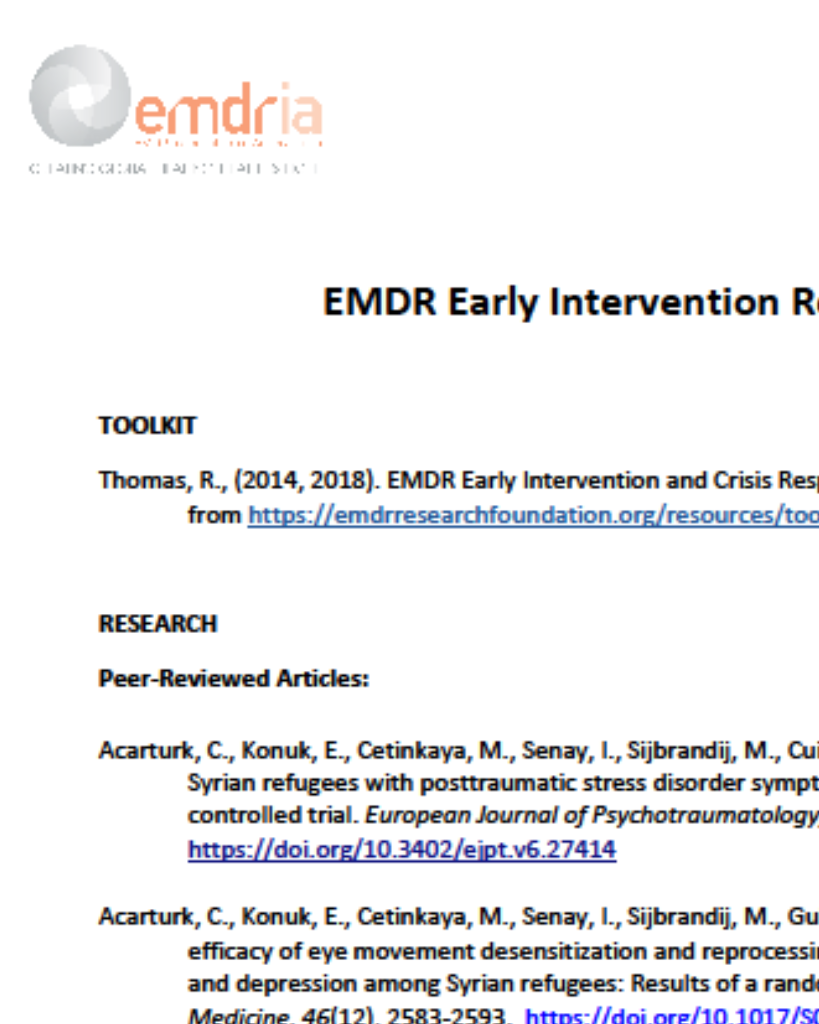Differences in International Guidelines Regarding EMDR for Posttraumatic Stress Disorder: Why They Diverge and Suggestions for Future Research
Practice guidelines for PTSD from three well-respected organizations differ in the degree to which they recommend EMDR as a treatment.
Article Abstract
“In the last 24 months, three separate practice guidelines for posttraumatic stress disorder (PTSD) have emerged from well-respected organizations that differed in the degree to which they recommend eye movement desensitization and reprocessing (EMDR) as a treatment. An international guideline was published by the International Society for Traumatic Stress Studies (ISTSS), and national guidelines were published by the American Psychological Association (APA) and the National Institute for Health Care Excellence (NICE). ISTSS reported that EMDR was effective and as potent as the best available therapies we can currently provide. NICE was more circumspect, and APA suggested other treatments had a stronger evidence base. In this review we focus on how these differences emerged and highlight the role of the time when the analysis was conducted, differences in inclusion criteria, and errors in determining appropriate measures. The 2017 APA guidelines were found to have the least validity when all these factors were considered. However, the fact that evaluating EMDR research is susceptible to such variations in methodology highlights certain research priorities that are then discussed.”
—Description from publisher
Article Access
Open Access
Dominguez, S., & Lee, C. W. (2019). Differences in International Guidelines Regarding EMDR for Posttraumatic Stress Disorder: Why They Diverge and Suggestions for Future Research. Journal of EMDR Practice and Research, 13(4), 247–260. https://doi.org/10.1891/1933-3196.13.4.247
About the Journal
The Journal of EMDR Practice and Research is a peer-reviewed publication devoted to integrative, state-of-the-art papers about Eye Movement Desensitization and Reprocessing. It is a broadly conceived interdisciplinary journal that stimulates and communicates research and theory about EMDR, and their application to clinical practice. The Journal of EMDR Practice and Research is the Official Publication of the EMDR International Association.
Date
December 1, 2019
Creator(s)
Sarah Dominguez, Christopher W. Lee
Topics
PTSD
Extent
14 pages
Publisher
Springer Publishing Company
Rights
Copyright © 2019 EMDR International Association
APA Citation
Dominguez, S., & Lee, C. W. (2019). Differences in International Guidelines Regarding EMDR for Posttraumatic Stress Disorder: Why They Diverge and Suggestions for Future Research. Journal of EMDR Practice and Research, 13(4), 247–260. https://doi.org/10.1891/1933-3196.13.4.247
Series
13
Installment
4
Audience
EMDR Therapists
Language
English
Content Type
Peer-Reviewed
Original Source
Journal of EMDR Practice and Research
Access Type
Open Access





